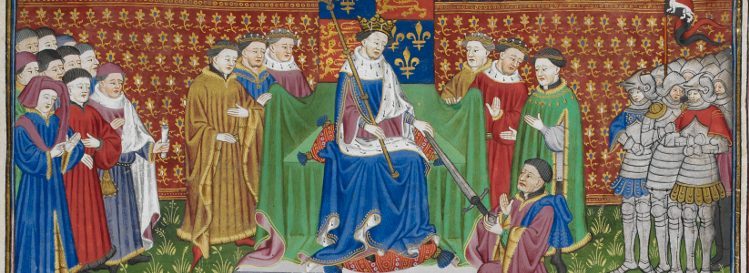Immediately after his murder in the Wakefield Tower and his burial, the manner of his death (the murder of an anointed king) and his reputation for piety and innocence drew pilgrims to King Henry's grave in Cherstey Abbey. Even after Richard III had his remains transferred to a grave in St. George's Chapel in the grounds of Windsor castle, devotion to the dead king continued, although access to his grave site within a royal castle was clearly more easily supervised and controlled. With the accession of Henry Tudor to the throne popular devotion to the murdered king was officially encouraged. Henry VII undoubtedly revered his saintly predecessor, but since he claimed to be the legitimate heir to the Lancastrian title to the throne, the canonisation of his father's half-brother, King Henry VI, could not but shed added glory on his crown and strengthen his title to the throne of itself. The Tudor monarch petitioned three popes for the canonisation of Henry VI, and some 300 accounts of miracles attributed to the king were collected. In 1500 a compilation of 174 of these were made in a manuscript “Henrici VI Angliae Regis Miracula Postuma”; the earliest account dating from 1481 and the latest from 1500. Some 30 of these miracles had even been declared “proven” by the investigating committee. Things, however, moved slowly in Renaissance Rome and the cause was still pending when Henry VIII broke with Rome over his demand for a divorce from Queen Catherine of Aragon and declared himself “Supreme Head of the Church in England”. The cause for King Henry VI's canonisation lapsed, having no longer royal support behind it.
In late 1959 as a result of correspondence in the Catholic press in England, the Henry VI Society was formed “with the object of obtaining the rehabilitation of this much maligned and misunderstood monarch, and of getting his Cause, dropped at the time of the Reformation, re-opened in Rome.” (information bulletin 1960) The society was run by the Honorary Secretary, Mrs. Dorothy Banks Warner from her home in Suffolk, and from 1973 by Miss Joan D. Lee in Kent. The society collected information on the king, compiling a bibliography, tracing and recording portraits and depictions of the king, collecting information on shrines and localities connected with his cult in the late 15th and early 16th centuries. They attempted to publish articles on the king's life and to correct those articles which were unfairly critical of him. They published a bi-annual newsletter to members and occasionally special booklets. On the anniversary of his death (21st May) they arranged a pilgrimage to his tomb in Windsor, as did delegations from his foundations of Eton and King's College Cambridge.
I became a member in 1961; the first and as far as I know, the only member at that time in Australia. I was a teenager living in Sydney, and my interest had been aroused by the BBC Shakespearean series “An Age of Kings”, in which the late Terry Scully played Henry VI. In my reading I came across the assertion in R. B. Mowart's “The Wars of the Roses 1377-1471” (p. 46) that by “the Roman Catholic Church he is held to be a martyr, and as such has been canonised.” I knew this could not be, since his murder was a political act. Henry did not die for his faith and deep piety; he was murdered for his crown. This put me on the track of the king's cult and led me through the good offices of a local priest to the Henry VI Society and Mrs. Banks Warner.
I settled in Vienna, Austria, in 1971 and contact with the society was maintained for the next few years. After the death of Dorothy Banks Warner contact became more difficult, although I was still able to communicate with Miss Joan D. Lee on a fairly regular basis. Unfortunately, her untimely death led to contact with the society becoming somewhat sporadic until in the late 1980's it dried up altogether. I have never been able to trace the society since. There is a benefactors' club called the “Henry VI Society” at Eton College, but it has no connection with the above society or its aims. A former chairman, Mr. Peter R. Gutteridge, has formed a society called “Eton, Cambridge and Associates for Henry VI” with which I made contact in late 2009. It was from Mr. Gutteridge that I learned that “the Henry VI Society had become defunct and dilatory in its attempts to get Henry VI canonised.” Unfortunately, contact with the new E.C.A.H. did not survive into 2010.
